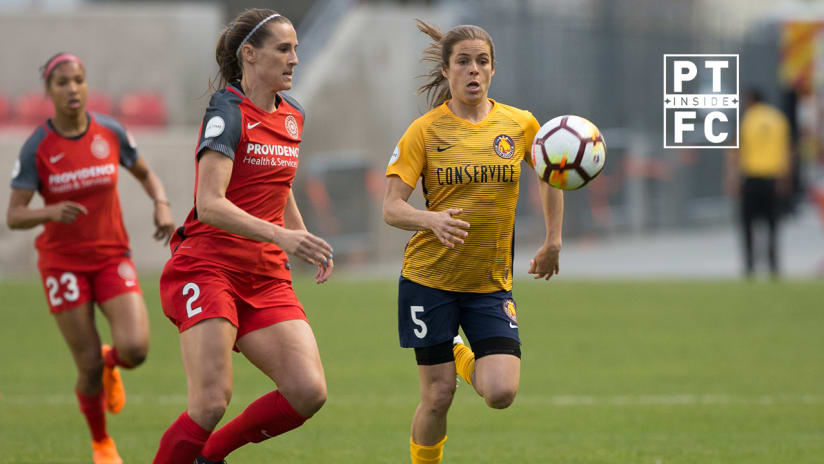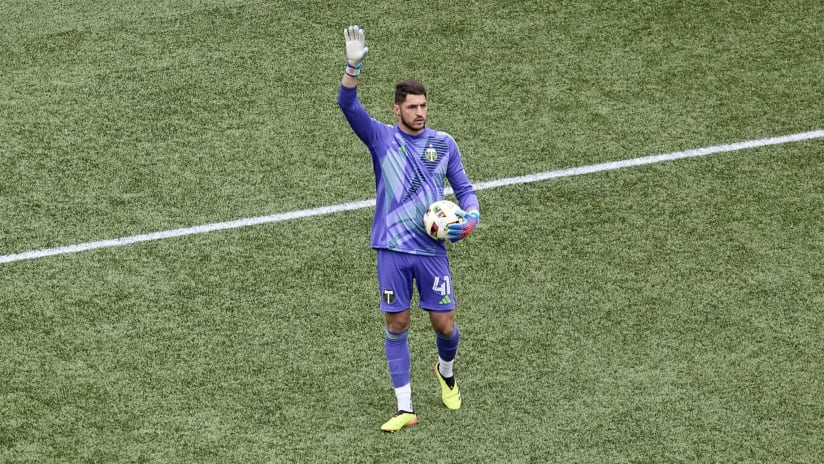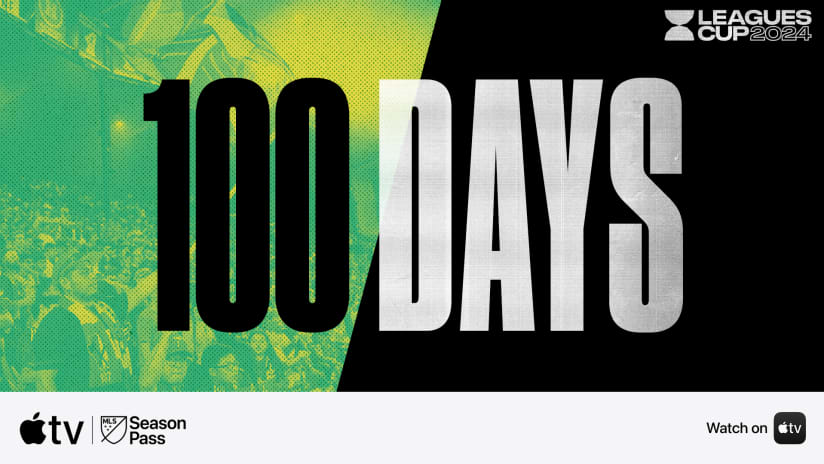Editor's Note: Inside PTFC is a new weekly column – one each for the Portland Timbers and Thorns FC – from soccer writer Richard Farley that dives deeper into the recent successes and challenges each team has been facing. Tactical looks, statistical analysis, rising players and more, Inside PTFC aims to give a closer look into the two teams.
PORTLAND, Ore. -- It’s rarely one defensive mistake that leads to a goal on the soccer field, so when high-level coaches break down film to determine the anatomy of a goal, there are usually multiple symptoms that contribute to their diagnoses.
It’s no different for Portland Thorns FC, who, over the last three games, have conceded a series of goals that have tested head coach Mark Parsons’ ability to describe them. “Random” was the word he used after Saturday’s game against Utah Royals FC, while “disappointing” was the diagnosis he offered on Tuesday, during his first meeting with the media after this weekend’s 1-1 draw. The errors are part of the “transition” his team is currently going through while integrating new players, he said, calling recent mistakes a “good wakeup.”
It’s a testament to the Thorns’ standard under Parsons that this, a three-match stretch where the team is allowing one per game, has become a cause for concern. Perhaps that reflects a certain healthy, positive nitpicking that comes with two major honors in as many years. But to chalk worries up only to nitpicking would ignore the nuance in the conversation. When mistakes happen, people become concerned; and when concerns meet patterns, genuine worries form.
Parsons himself is walking that progression, too, saying after the draw in Utah, “random goals have happened too much for us this year. It’s not normal, so we’ve got to put an end to this, fast.”
The silver lining in that statement is that qualifier: “random.” It’s an important distinction, one that separates what’s happening now from being a larger, system-wide issue. This isn’t the case of a team using the wrong approach, seeing a high line burned or a center defense picked apart because they lack cover. There are no physical inadequacies being exploited by other teams, and to the extent there have been matchups that don’t favor the Thorns, it’s nothing the team hasn’t faced, before.
The goals the Thorns gave up against the Orlando Pride, Washington Spirit and Utah were the results of basics breaking down, and while, as the scoreboard shows, those mistakes carry the same punishment as any other error, how a coach addresses the problem is far different.
Thorns fans who follow the Portland Timbers saw this play out over the men’s team’s first three games. In away matches at the LA Galaxy and New York Red Bulls to start the MLS season, Giovanni Savarese’s team gave up six goals and saw a number of symptoms that hinted his team needed to change approach. The center backs were making mistakes, the midfield wasn’t offering protection, and the fullbacks were putting their partners in bad spots. As a result, Savarese switched formations before game three, added a central midfielder to the setup, and changed his team’s course.
To the extent Parsons is going through a similar debate now, there seems to be an obvious answer. When a defender and midfielder miscommunicate on a quick restart, as happened against Orlando, you review the situation, not the team’s defensive scheme. When misfortune happens in the six-yard box and a goalkeeper collides with a defender, you again address the situation, not the team’s broader approach. And when a forward like Amy Rodriguez, this weekend, is bearing down on a center back at the edge of the defensive third, you took at those specific circumstances, and not necessarily a pattern in the team’s execution.
Admittedly, for some coaches, these are very similar things. To them, allowing goals is allowing goals, and how you play with the ball can be just as important to goal prevention as how you play without it. More colloquially, though, when you hear criticism like “the defense is not performing well,” more often than not, the situation requires a more granular look. Paradoxically, a defense can, in the big picture, be performing well while a team is giving up goals.
For Parsons, that look seems to be based on three or four tenets, the first of which is an actually positive note. As a whole, the team is still defending well. Giving up two shots on target in their last two games testifies as much. That doesn’t mean problems shouldn’t be addressed. It just means the foundations are solid.
“It’s reminding people of the basics,” he said, when asked about solutions, “and reminding the team that we’re still really hard to break down as a group, and as units. We’ve just got to remove giving oppositions looks.”
The reason for those looks, Parsons explain, don’t always come down what we see on the highlights. If a pass is misplaced, he reasons, or a player has the ball taken off of her, there are usually multiple other things that have broken down before that point, things which put the team in a bad spot.
“We haven’t had the same people (making the mistakes),” he explained. “People have learnt. And all these goals, people will look at the last person involved in the action. I’m seeing five people involved. The goal from the weekend? Four people involved in little tiny mistakes that lead to the opportunity for them.”
The other part of this picture, according to Parsons, is the layoff between seasons. For those expecting the Thorns defense to immediately resume league-best levels at the beginning of each campaign, a look at the calendar – and the four months the team has away from each other between seasons – offers a counter point. Any cohesion built up over the previous year has to be reset when at the new campaign’s dawn.
“One of the negatives of having four months off – it doesn’t matter how much you’re in sync when they leave, how good the players are – everything takes a bit of time …,” Parsons said. “We’ve played a bigger role than we would like in the last couple of goals. It’s unlike us. But it’s like when you’re not putting the ball in the back of the net. If you sit there and dwell on it, put too much time and energy on it, it probably makes it harder to start scoring, or start making people overthink.”
Which leads into Parsons’ final tenant: dwelling on the negative. “This Saturday, I’m not worried about [the defensive’s goals allowed],” he said, referring to the upcoming match against Seattle Reign FC (12:30pm PT, Lifetime, TICKETS), but he did strike a note of caution at Tuesday’s gathered media, including reporters from The Oregonian and his team’s website who regularly attend the Thorns’ training sessions.
“What I am getting nervous about,” he said, “is the more you both ask me about it, the more it gets momentum, the more it can create a psychological [effect]. But, I know that’s how it works. Unless we win 5-0, everything’s flying, something has to be talked about, and I’m really glad that we have such great people that want to talk and listen.”
Where that talk focuses, though, becomes important context, as well as, potentially, a level of nuance that is missing from most discussions about defending. While every goal conceded counts the same, not every goal is born from a similarly worrisome problem.
To date, the Thorns’ concessions have not been about inherent, potentially persistent flaws. They’re about small, isolated mistakes producing big outcomes. That doesn’t mean the problems shouldn’t be addressed. It just means the problems have a more isolated scope.














